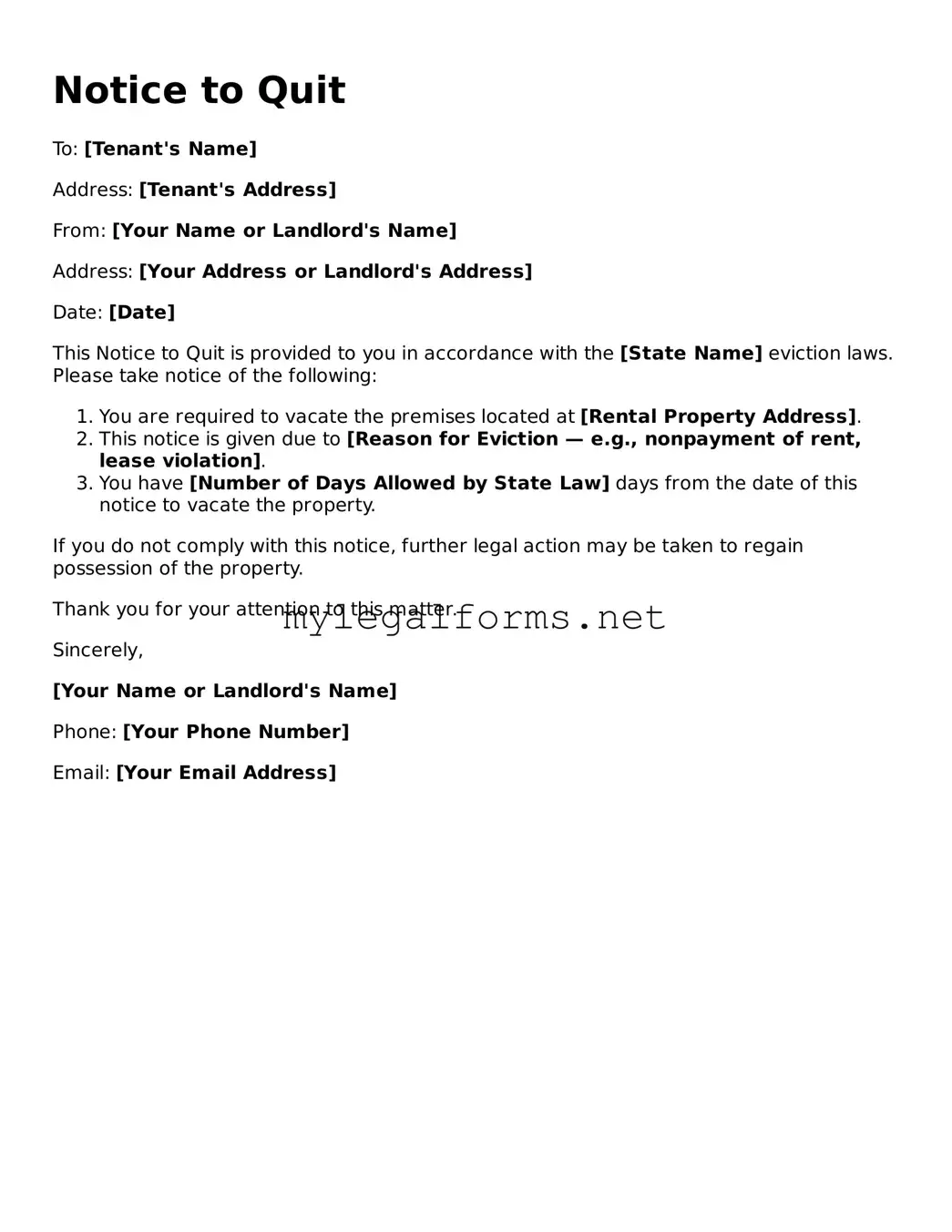Attorney-Approved Notice to Quit Form
The Notice to Quit form is an official document used by landlords to inform tenants that they must vacate the rental property. This form outlines the reasons for the eviction and provides a timeline for when the tenant is expected to leave. Understanding this form is crucial for both landlords and tenants to ensure a smooth transition and to uphold legal rights.
Launch Notice to Quit Editor
